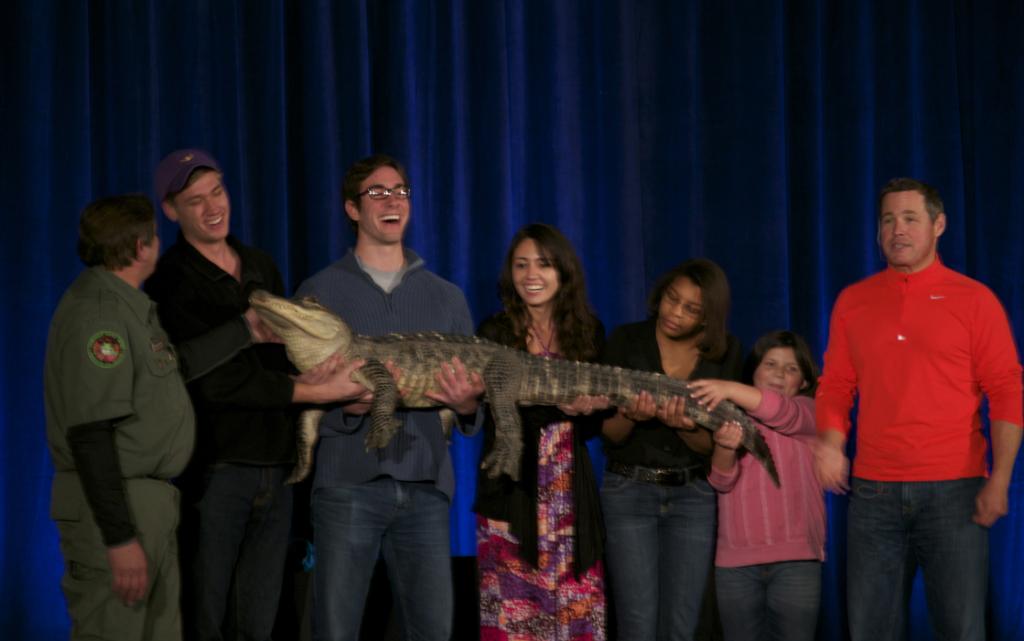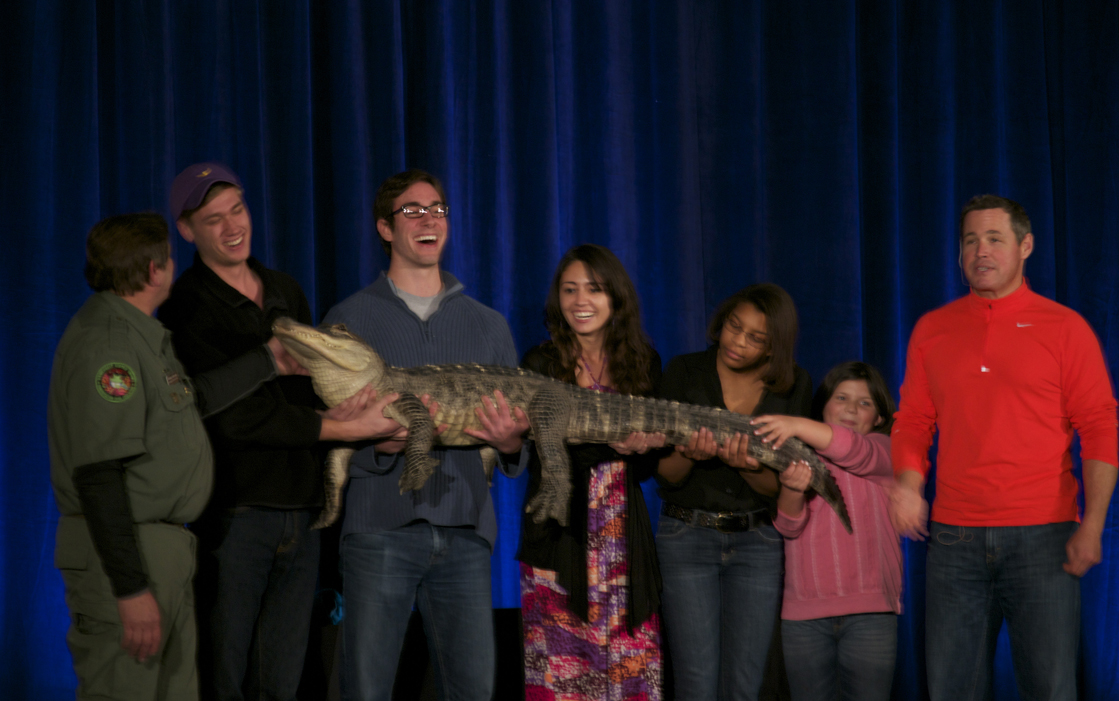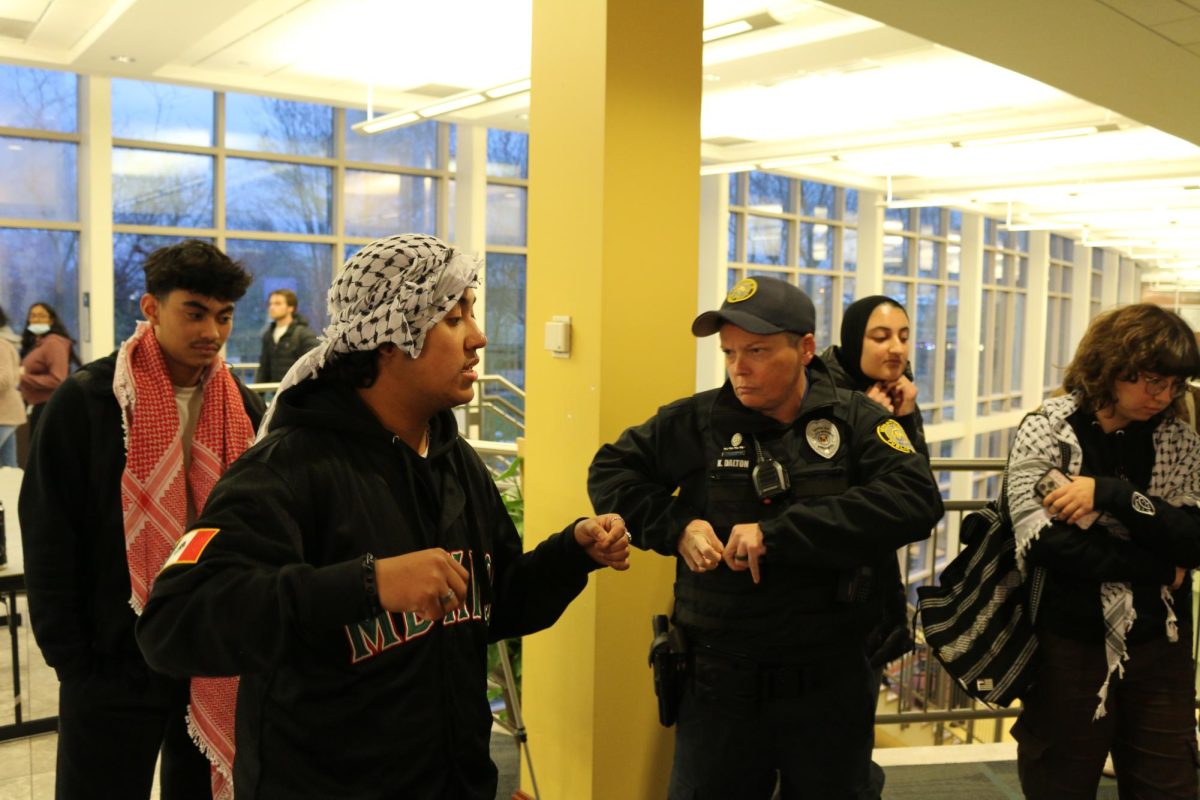
Swamped: Audience members hold an american alligator during Jeff Corwin’s talk.
SLU’s campus got in touch with its wild side on Monday when Jeff Corwin gave a talk titled “Tales from the Field,” hosted by the Great Issues Committee. Corwin’s talk centered on sharing his fascination with animals and the way human actions have affected their lives and environments.
“The moment it looked at me, I reached out and grabbed on to it… and it reached out and grabbed on to me,” Corwin, the environmental journalist and Animal Planet celebrity, said of his first encounter with a snake. He was exploring in his grandparents’ backyard, and from that moment he knew he would spend his life with animals.
The same snake was also the reason he became a conservationist: when he saw a neighbor slice the snake in two with a spade after Corwin had been watching it for years, he realized that “sometimes good people make bad decisions because they lack information.”
Over the course of the night, the animal lover brought five different amphibian and reptilian co-stars on stage, along with many eager volunteers, and with each gave an aside as to how humans had affected similar creatures. Corwin reassured anyone worried about dangerous animals at the beginning of his talk.
“If something does happen, I’m very well insured,” he said with a smile.
One guest was an alligator snapping turtle, the largest freshwater turtle in North America. Corwin said that the precise lifespan of alligator snapping turtles isn’t known, and that there are records of people finding flint and musket balls underneath layers of their shells. The turtle is lucky if their offspring grow to become an adult in every five or six years of nesting, and it can take an ecosystem nearly 100 years to replace an adult, which makes it even more difficult for the species to survive if human actions are harming their environment.
The turtle he showed to the audience was found and rescued in the aftermath of Hurricane Katrina.
“In all of that morose appearance and its garish mug I see something worth protecting,” Corwin said, expressing his love of all things nature.
The beast that followed required five volunteers to handle.
“I’ve never seen more people excited to go to the emergency room,” Corwin said as he picked out participants from a sea of waving hands.
Once the five volunteers were lined up, Corwin’s assistant carried an American alligator to the stage and placed it along their outstretched hands.
“To me [alligators] are a great example of perfect design,” he said, noting that alligators have existed on the planet essentially unchanged for the past 60 million years. He described them as a “keystone species” because of their tremendous impact on aquatic ecosystems. Through their natural existence they help to keep river tributaries open and provide food and shelter for other aquatic species.
Corwin noted that the American Alligator was an endangered species at one point, but through conservationist efforts they have recovered and maintain strong populations through much of North America. He said their success story gives him hope for other endangered species.
For his final exposition, Corwin called a bright-faced nine-year-old named Elizabeth on stage and brought her face to face with a ten-foot long, 40-pound boa constrictor.
He demonstrated the snake’s tendency to test its environment by flicking its tongue and said that their jaws don’t dislocate, but stretch to fit their prey in their mouths. He went on to talk about pythons that were introduced to a Florida habitat and became an invasive species, thriving in their new environment and destroying the ecosystem in the process.
Corwin ended the night with G.I.C.’s customary question and answer session, during which he told students how they can get involved in conservationist efforts.






